You’d expect the biggest estuary in North America to be an angler’s haven. And nothing quite compares to a Chesapeake Bay fishing adventure. Hit the hundreds of rivers that flood into this prolific fishery, head to the bay itself, or explore the nearshore treats that await at its mouth. Basically, wherever you look there’s a prize on offer.

Every angler worth their salt will relish a trip to the Chesapeake Bay. Inshore and nearshore rewards like nowhere else fill these waters, so you’re in for a productive day whenever you visit.
In this article, we’ll cover everything you need to know about fishing the Chesapeake Bay. We’ll run through the top catches, how to land them, and where to go to get the biggest bang for your buck. By the time you’re done reading this, you’ll be ready to grab your rod and reel to cast your line. So without further ado, let’s dive in.
Best Fish to Catch in the Chesapeake Bay
We’ve mentioned that fishing the Chesapeake Bay is like a who’s who of inshore fish. You can find some of the same species all over, with a few select creatures hiding in particular spots. While we couldn’t possibly cover all the creatures that call these waters home, here’s a rundown of the top catches.
Flounder

Chesapeake Flounder fishing is an institution in the southern portions of the Chesapeake Bay – but this species ranges as far north as the Chesapeake Bay Bridge in some seasons. If you fish here, chances are you’ll come across one of these tasty critters. While they’re not the most attractive fish to look at – and neither are they the toughest to catch – they provide plenty of fun and are a surefire way to fill the cooler.
Flounder are also a delicious reward for any experienced angler who’s spending the day targeting dinner. Whether on shore or on a charter, you have a shot at these fish, as they feed near the bottom and in shallow waters close to shore.
Bluefish and Redfish
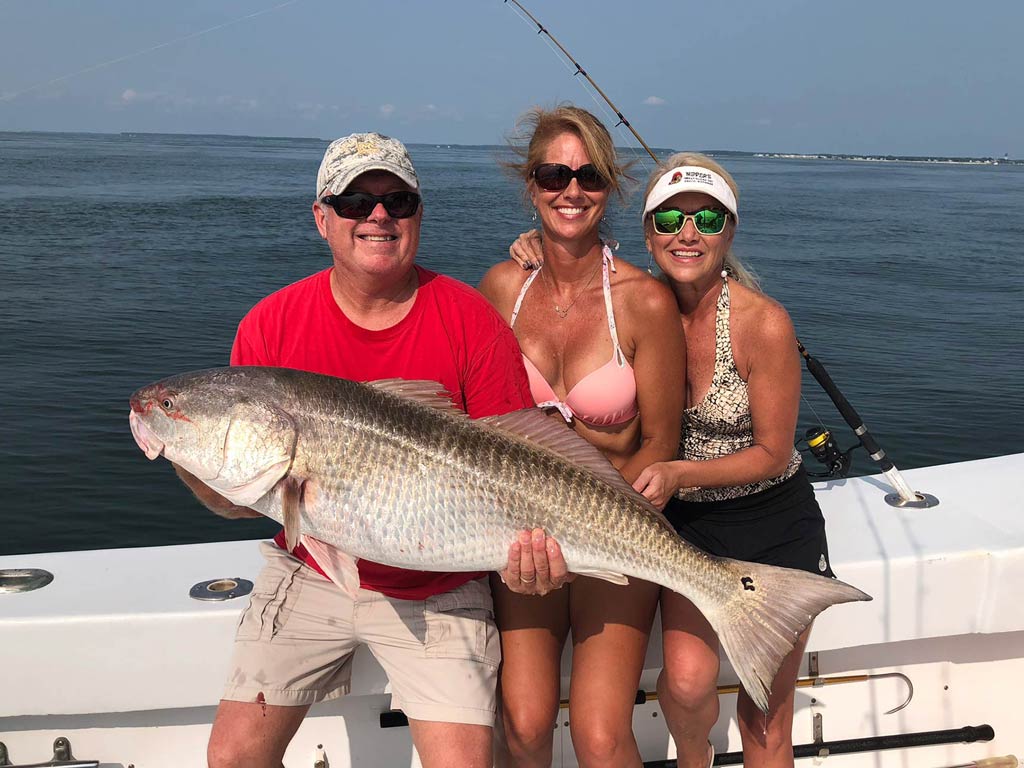
One of the beauties of fishing the East Coast is that some colorful creatures rub shoulders inshore. Bluefish and Redfish offer up an exciting battle for all anglers, and it’s two for the price of one when casting your line in the Chesapeake Bay’s waters.
Bluefish arrive in the spring and may travel as far up the Bay as Baltimore, and sometimes slightly beyond. Redfish of incredible sizes migrate here during the warmer months of the year, especially in the southern portions of the bay, making you work hard to reel ’em in. Commonly during the summer months, big Redfish can be found underneath schools of Bluefish attacking bait fish – so you might catch a Bluefish on one cast and a Redfish on the next!
Anglers of all levels can practice their skills against these beauties, but fly fishing especially produces some world-class battles. Redfish, in particular, provide some delicious meat, too, if you can find “slot” sized fish that are legal to harvest. Spend your day working hard to reel plenty in, and end it with a well-deserved treat to take home.
Spanish Mackerel
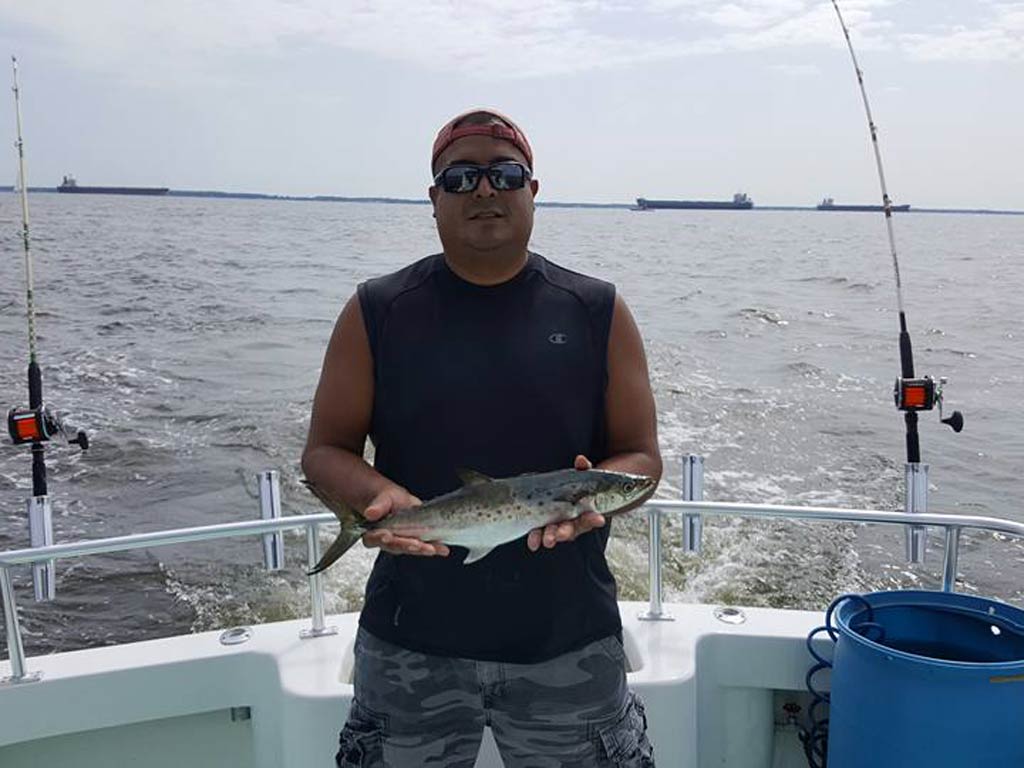
Another species prized for their delicious meat, but also their readiness to fight are Spanish Mackerel. And you can catch them through much of the Chesapeake Bay across many seasons, where and when the salinity is high enough. (This is usually from the mouth of the bay to around halfway up its length during mid-summer.) Whether trolling on a boat or casting lures beneath working birds, there’s a good chance you could land one.
Small yet agile, they provide fun for all ages and skill levels. They come to the bay in late spring and sometimes stay as late as October. Then, they head off south to warmer climates for the winter. Don’t worry, though. Summer through fall is peak fishing season in the bay (more on that later!), so you’ll most likely have the chance to land this creature when you visit.
Cobia
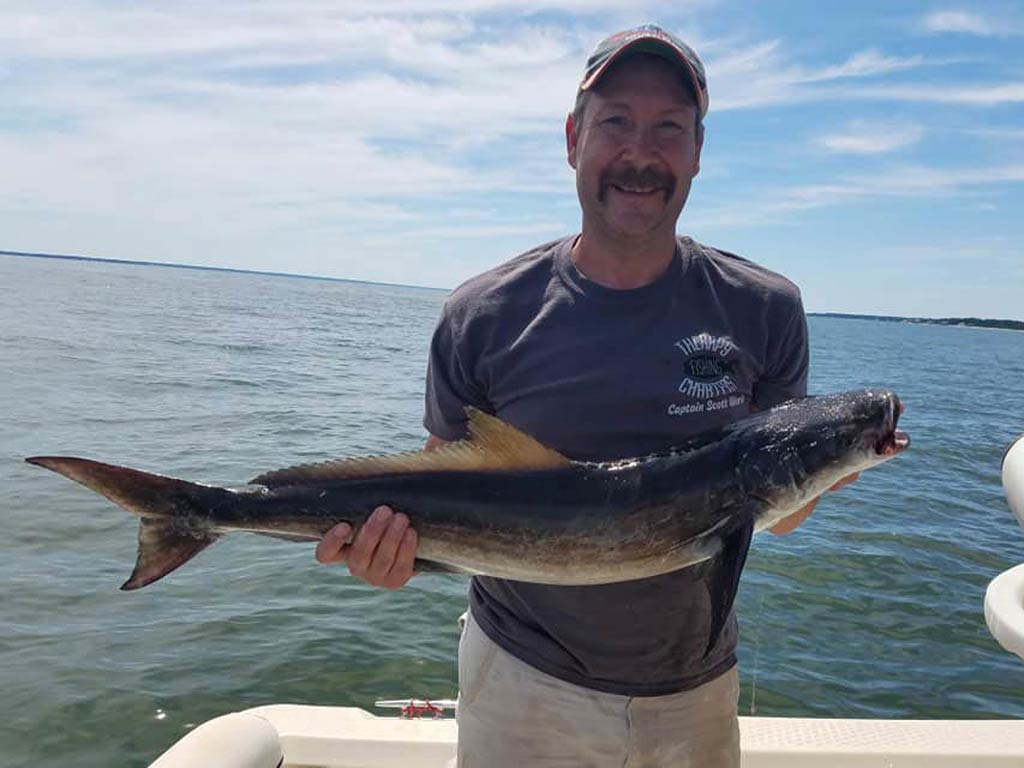
Just like Spanish Mackerel, Cobia also migrate to the Chesapeake Bay in late spring or early summer and stay until early fall. However, these creatures are usually only available in the lower portion of the bay up to its middle reaches near the Maryland/Virginia border. They come ready to spawn in summer, meaning they’re plenty hungry for your bait.
Just like everything we’ve mentioned so far, they also provide some tasty meat. However, these creatures are much bigger than all their counterparts. Landing just one could see you dine for months to come! Try trolling the open water with lures resembling eels, or live-baiting with the real thing. You’re in for surefire fun and plenty of rewards.
Striped Bass (Rockfish)
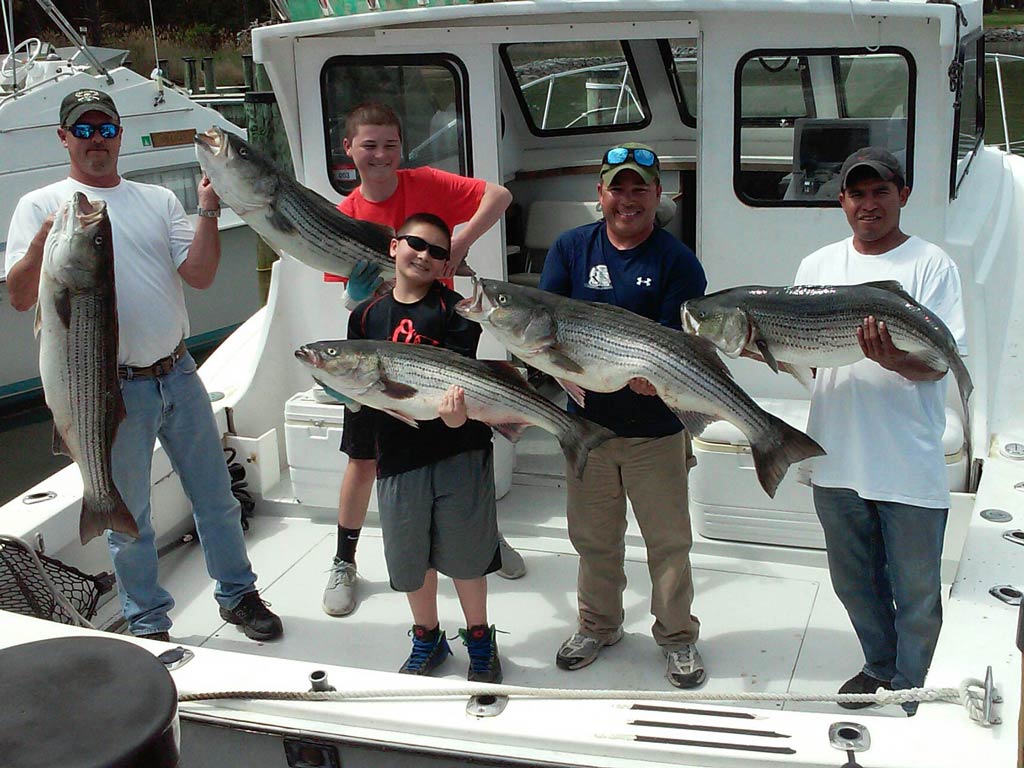
Striped Bass – or Rockfish, as it’s known locally – is the gem of the Chesapeake Bay fishing scene. As with the whole East Coast, anglers go wild for these tasty creatures here. And for good reason! Chesapeake Bay Rockfish produce around 80 percent of the entire East Coast Striped Bass population, spawning in many of the bay’s tributary rivers. In fact, this creature is so plentiful here that Maryland even named it its state fish!
The vast majority of these fish remain in the Chesapeake until reaching 30 inches or so in length before they begin migrating north. Not only that, but those huge migratory breeders return to the Chesapeake Bay every winter as they prepare for the spring spawn. So you can catch Rockfish of one size or another year-round here (although they’re closed for harvesting at different points in time throughout the year)! Whenever you come, cast from shore, a pier, a bridge, or boat, and you could end up with the battle of your life – and a prize to match.
And More!
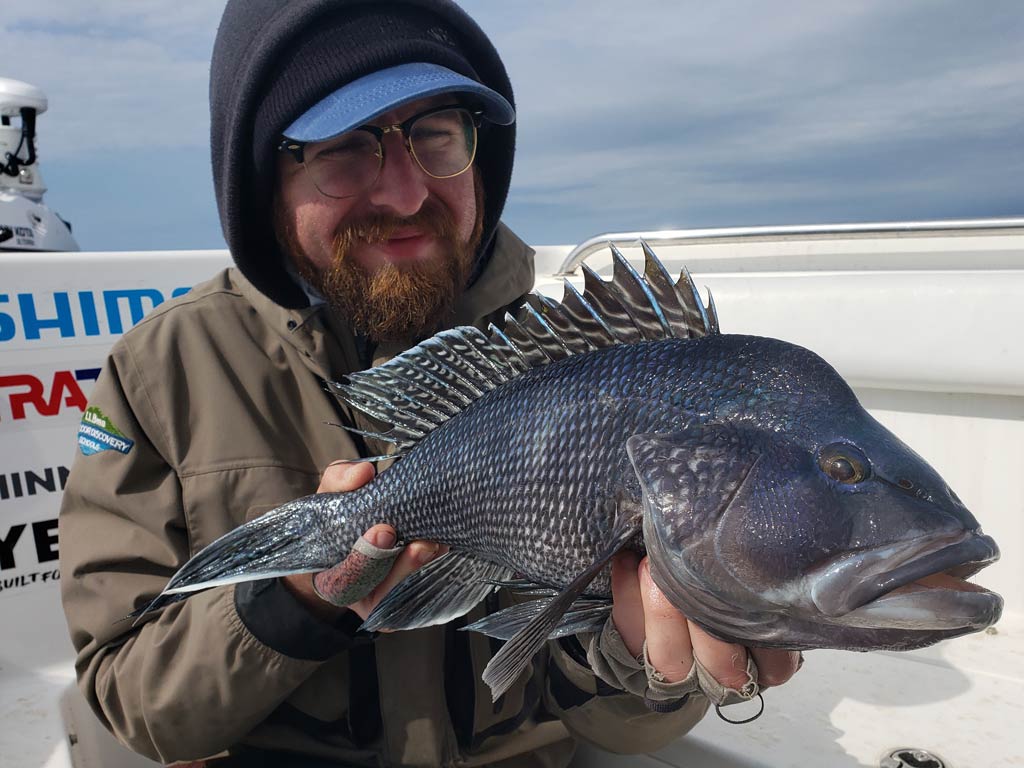
That’s just the tip of the iceberg when it comes to the long list of creatures you can land when fishing the Chesapeake Bay. Hit the tributary rivers and there’s the chance of landing Panfish such as Crappie and Perch, plus freshwater gamefish like Largemouth Bass and Pickerel.
Inshore, Spotted Seatrout, Tautog, and Seabass are also on the menu, with Spadefish, Sheepshead, and Weakfish all within reach. And there’s the chance for one of the Chesapeake Bay’s delicacies of a different variety, Crab!
If you’re near the Chesapeake Bay and fancy an offshore adventure, there’s also plenty in store. Head out to the Atlantic on a long charter trip, and you could land prizes such as Tuna, Wahoo, Mahi Mahi, and prized Marlin. In short, whatever you decide, you won’t go wrong!
What anglers said about fishing in Chesapeake Bay
How to Go Fishing in the Chesapeake Bay
Now you know what you can catch, the next thing to find out is how to go about doing so. As with every great fishery in the world, there’s more than one way to cast your line in the Chesapeake Bay. Here, we’ll give you a rundown of some of the most popular ways to go fishing.
Chesapeake Bay Shore Fishing

We’ve spoken about the rivers and the shallows, so it’ll come as no surprise to you that you can fish the Chesapeake Bay from shore. Get back to basics and set up camp for the day, as you cast your line to entice all the creatures that come close enough to dry land.
Fly anglers in particular favor this way of getting in on the action, with the rivers and flats making for productive hunting grounds. However, with such an abundance of fish available, beginners and pros alike can get their fill. Bring some waders to get up close to the action or sit back in a chair and let your bait do the work. There are so many fish that pretty much any lure will attract something!
Chesapeake Bay Pier Fishing
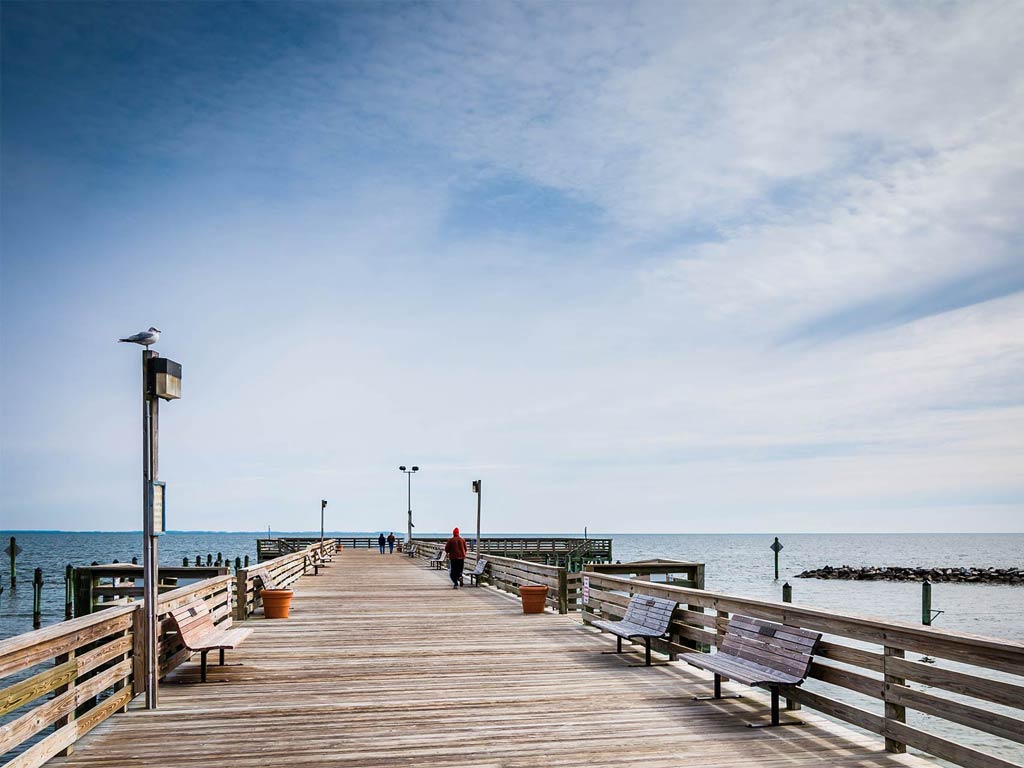
If you like casting your line from shore, then you’ll love pier fishing in the Chesapeake Bay. These purpose-built structures extend out into the productive bodies of water where the fish live, and they gather nutrients and bait fish for all your favorite targets to feed on. Add your bait to the mix, and you’ll fill your cooler with ease.
There are dozens of piers all over the Chesapeake Bay, so wherever you are, there’s the chance of heading out on one. They’re usually free to fish from, or a nominal fee is charged, so it’s a cost-effective way of getting your fish on. And, you’ll have the added bonus of being surrounded by like-minded anglers. You may make a friend alongside your prized catch!
Chesapeake Bay Kayak Fishing
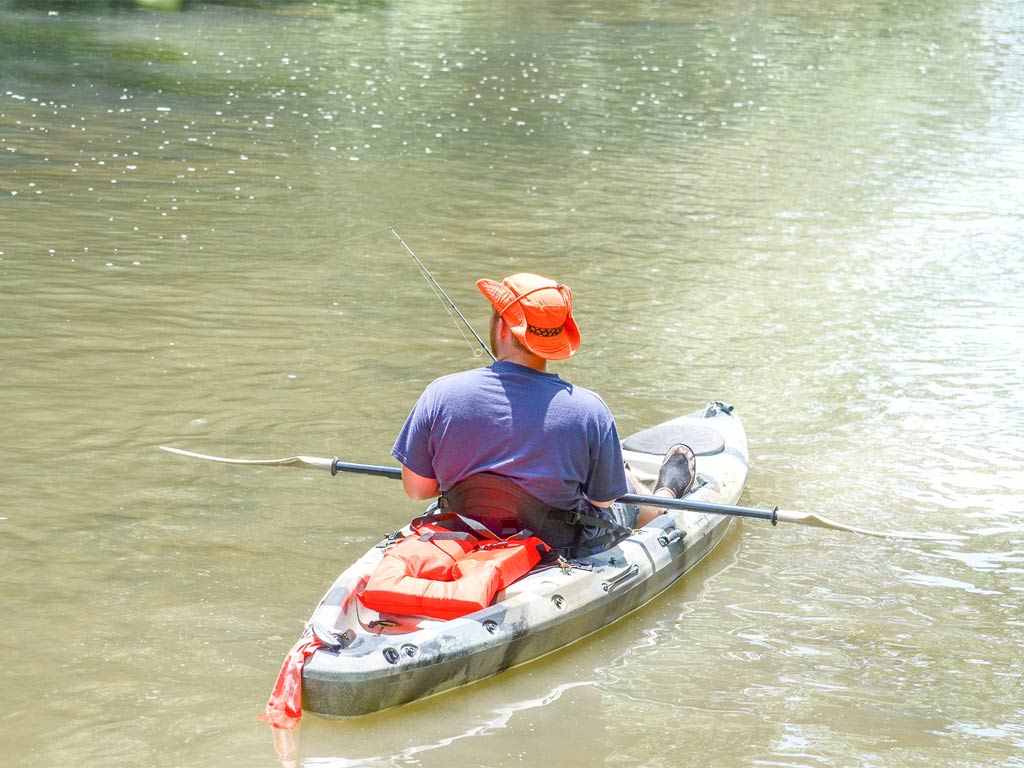
Every serious inshore fishery is constantly developing, and the Chesapeake Bay is no different. This calm body of water is perfect for exploring by kayak. So, some innovative fishing fanatics decided to combine the ride with angling, too. In fact, plenty of special kayaks have been developed for ease.
Fancy a serious workout on the open waters? Or maybe you want to discover some of the Chesapeake Bay’s more hidden spots and land something tasty. Kayak fishing is a great way to get active and try something new. All the bay’s favorite species are available. Just make sure to start small and work up to the bigger fish, for your sake and for the fish!
Chesapeake Bay Charter Fishing
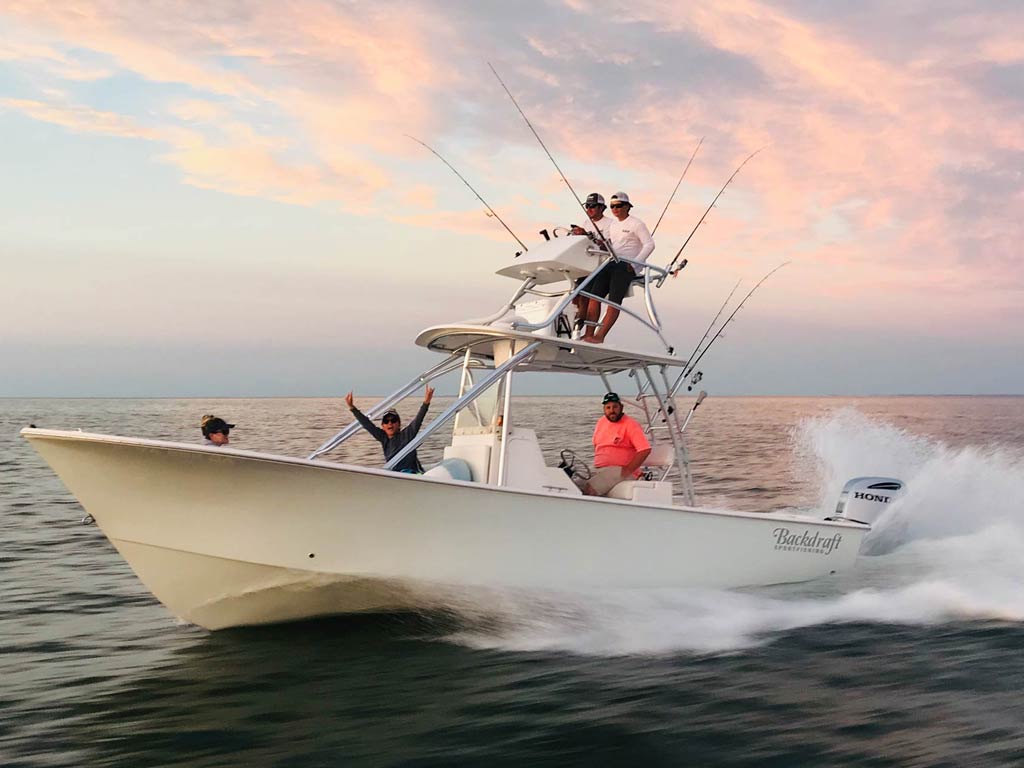
While all of the above are fun ways to explore the Chesapeake Bay, one method of fishing is hands-down the most productive. We’re talking about hopping on a charter boat! With the aid of a professional guide, you’ll hit the sweet spots and cast your line in a variety of ways. If the fish aren’t biting, you just whizz off to a spot where they are.
Yes, trips aboard a charter are on the pricier side, but there’s really something for everyone. Hop aboard a small vessel and hit the shallows, hire a larger charter boat and explore the open waters of the Chesapeake, jump on a party boat to drop your line in the nearshore waters just outside of the bay, or hire a private offshore charter and head offshore. With these options and everything in between, you can’t go wrong.
Chesapeake Bay Fishing Spots
With nearly 4,500 square miles of surface area, we’d need a book to outline even half of the spots the Chesapeake Bay has on offer. Locals split the bay into three sections, the upper, middle, and lower portions, and here are our top spots in each.
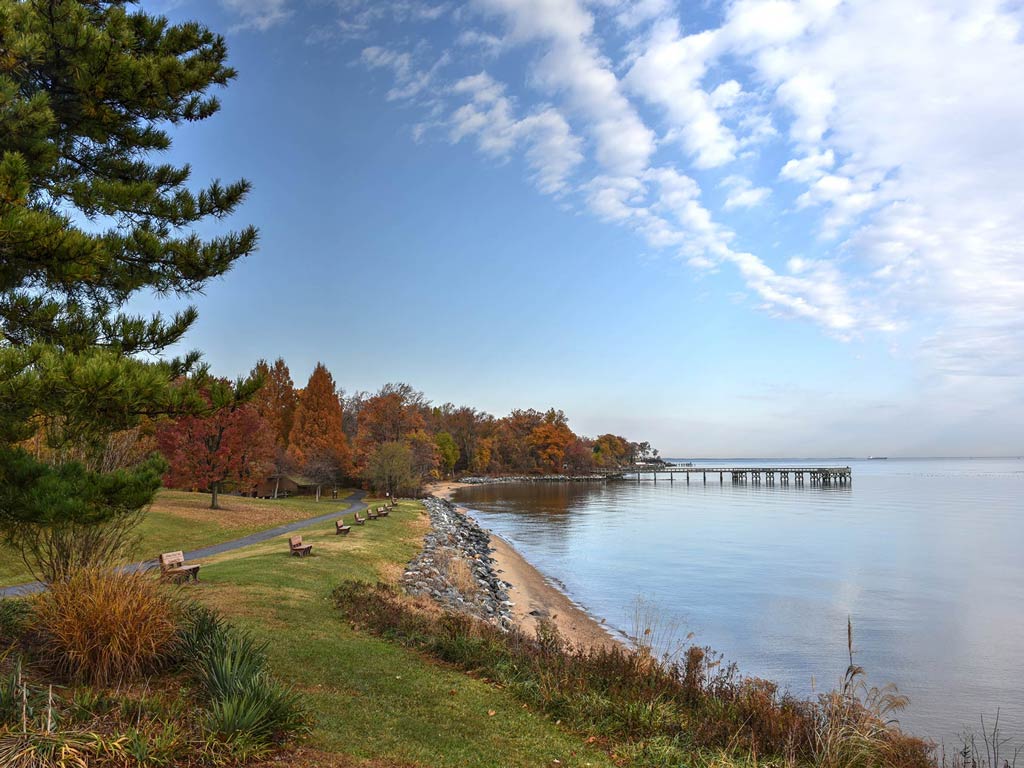
The Upper Bay
- Baltimore: The home of fishing in the upper bay, you can cast a line from the harbor, seaside parks, or hop on a charter. Leave the hustle and bustle of the city behind, just minutes from downtown.
- Fort Smallwood Park: This park offers access to the bay at the mouth of the Patapsco River, with a boat ramp, a 380′ fishing pier, and a beach. Relax and spend your day in beautiful nature, while going after some prized fish.
- Elk Neck State Park: At the headwaters of the Chesapeake, this park has fishing piers, a boat ramp, a soft-launch for kayaks, beaches, and even a campground.
- Pooles Island: Accessible only by boat, this spot is famous for attracting Striped Bass through much of the year thanks to the shoals and channels to the south and east of the island.
The Middle Bay
- Annapolis: Maryland’s capital is a fishing haven for all kinds of anglers. Striped Bass rule the roost here, but southern species like Flounder and Redfish migrate this far north some seasons.
- The Chesapeake Bay Bridge: This structure attracts such a melting pot of fish, that it deserves a bullet point in its own right. This is one of the biggest Striper hotspots in the bay, so get ready for some of the best angling around.
- Sandy Point State Park: Located at the base of the Bay Bridge, this park has a boat ramp, offering beach and jetty fishing.
- Poplar Island: Ringed by rocky structure, this is one of the most popular spots on the bay for boat anglers to try their hand at topwater fishing for Striped Bass. In the summer, Bluefish and Spanish Mackerel show up, too, and this is the northernmost spot in the Chesapeake where Cobia commonly make a brief appearance.
- Solomons Island: With a public fishing pier and boat ramp located where the Governor Thomas Johnson Bridge spans the lower Patuxent River, Solomons offers access to both the river and the open Bay. The pilings of this bridge are known for attracting hordes of fish, too.
The Lower Bay
- The Targets: Properly called the “Hannibal Target” but simply referred to as “the targets” by locals, these ships were once used by the Navy for target practice. Today, they sit on the bottom of the bay near the state border and attract everything from Cobia to Bluefish to Redfish.
- The James River: Famous for producing record-sized Blue Catfish upriver and loads of Speckled Trout and Redfish downriver, there are countless shore, kayak, and boat fishing opportunities up and down the James.
- Kiptopeke State Park: With a line of half-sunk concrete ships paralleling the shore, this spot is as fishy as they get. There’s also a huge campground and a fishing pier that’s illuminated at night, so it”s a great place to kick back and get your fishing fix.
- Virginia Beach: Possibly the number one place to hop aboard a fishing charter in the Chesapeake Bay, there’s something for everyone in VB. Inshore, nearshore, and offshore trips are all available, so come and try whatever you want!
When to Go Fishing in the Chesapeake Bay
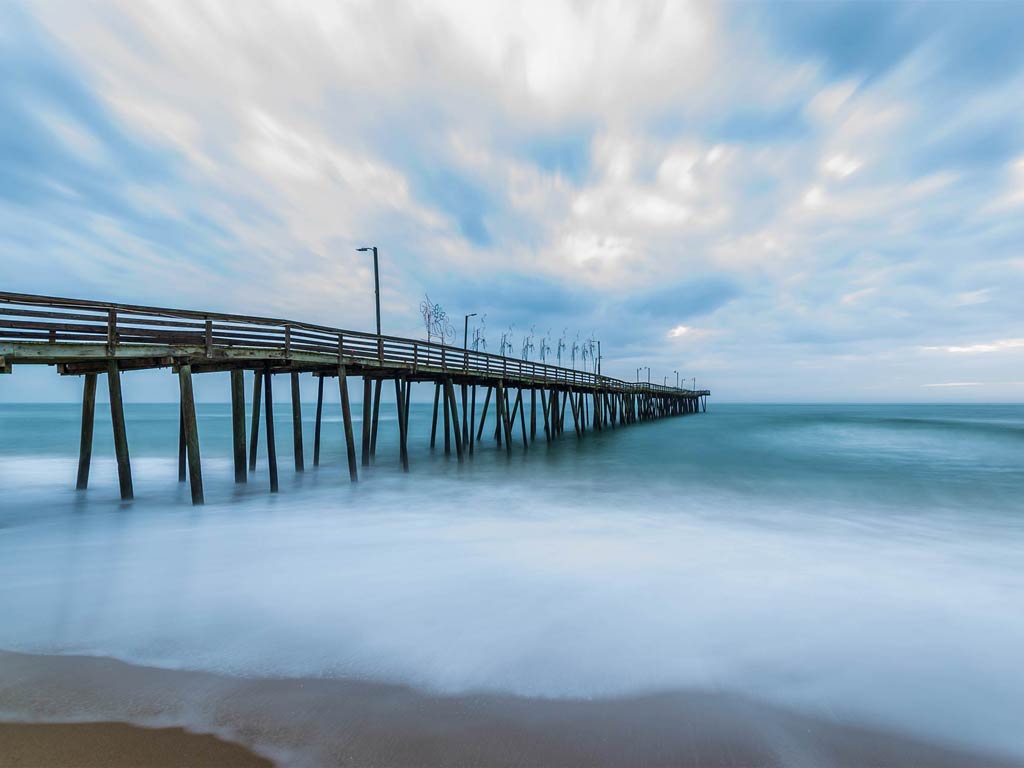
When people talk about the best time to come fishing in the Chesapeake Bay, many mention that it’s “seasonal.” Actually, with the changing climate and unpredictable weather, that’s not entirely correct. While the fishing opportunities here vary by the season – angling in August is very different from doing so in December – it’s still a 365-day-a-year fishery.
The rivers and creeks are your best bet if you come in the colder months, with summer offering options all over. Charter operators also tend to shut down in January and February (longer in northern areas of the bay), so if you want to follow a professional guide, visit when it’s warm.
The bay’s most coveted fish, Rockfish, is only available to take home during portions of the spring, summer, and fall, and the specific periods open to harvest are constantly changing as the Rockfish population fluctuates. So, if you want your fill of tasty meat, you’ll need to look up the current regulations.
Chesapeake Bay Fishing Regulations

Speaking of open seasons, there’s one thing left to discuss when talking about this incredible fishery. As with everywhere, there are bag and size limits on most species of sport fish. But if you want a full rundown of what you can and can’t catch, check out the regulations for Maryland, the Potomac River Fisheries Commission, Washington, D.C., and Virginia.
You’ll also need a fishing license to cast your line in the Chesapeake Bay, though charter boats and some recreational boats have a “boat license” allowing anyone aboard to wet a line. You can fish in Maryland with a Virginia license, provided you’ve signed up to the MD Saltwater Angler Registration, and vice versa. Find out how to get a VA license with our handy guide, or head over to the Maryland DNR website to apply for your MD license. Either license also entitles you to fish in waters regulated by the Potomac River Fisheries Commission, but Washington, D.C. requires its own license.
Chesapeake Bay Fishing: World-Class Angling Awaits
And there you have it. Now you’re ready to cast your line in this incredible fishery. Hopefully, you can see why we’ve hyped the Chesapeake Bay up so much. Of course, the only real way to find out how good it is is by trying it out yourself! Grab your rod and reel and head out, or find a charter that suits you, and away you go. Some of the best inshore and nearshore fishing in the world will be on the end of your line.
And now over to you! Have you ever been fishing in the Chesapeake Bay? How was it? Have any tips for other anglers? We’d love to hear from you in the comments below!


